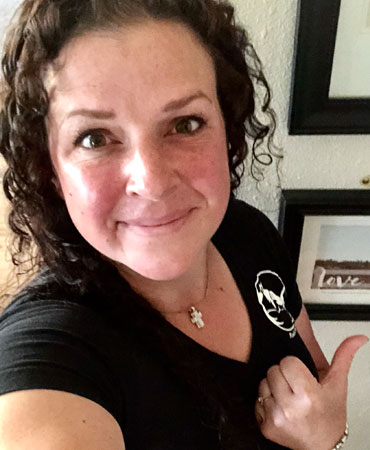Infusing humor into marketing and advertising is an ingenious and memorable way to engage your followers in a way that makes you stand out from the crowd. Humor is a universal language, breaks down barriers, and shows your brand’s humanness.
I bet the advertisements that have stuck with you the most all have a common thread: they made you laugh, sending that surge of “feel good” energy through your body. Many watch the Super Bowl for this reason alone: the hilariously creative and outlandish advertisements. Remember this year’s epic Marvel-inspired Bud Light commercial where we saw Post Malone join our favorite Endgame characters?
EPIC!
Communicating your brand through humor shows a deep understanding of and confidence in the personality of your brand. Finding that consistent voice that echoes through your content will make your clients feel like they are talking to an old friend, which will keep them coming back to that relationship and familiarity.
Humor, and brand identity and brand voice, in general, help communicate who your brand IS over merely what your brand DOES.
Examples of Humor In Marketing
Wendy’s has gained a huge following, as well as viral internet attention, due to roasting its competition and followers on Twitter.
Burger King’s Whopper Neutrality campaign had its audience laughing as it presented its famous “Whopper” burger as a lesson in net neutrality. Playing on the major global issue at the time, the customers were told they’d have to wait longer for the burger if they didn’t pay more. The use of humor during a sobering time provided a needed laugh and a clever advertisement.
Benefits of Using Humor In Advertising
Humor, when done well and appropriately, can achieve several benefits like:
- Calling on your customers’ memory recall, like humor, is linked to heightening it, meaning your target demographics are more likely to remember you when humor is associated with your brand.
- Having a contagious quality. Laughter is a language we all can speak, which makes your material more shareable and engaging.
- Portraying a humanistic trait. Humor is innately human. Therefore, expressing it shows relatability and builds trust.
What To Look Out For With Humor (Potential Downsides)
The keywords above were “when done appropriately.” Humor can have a very opposite effect if done incorrectly or insensitively. Humor should never be brash, or a quick decision. Make sure your humor is tasteful and well thought out before sharing it with the unforgiving, unforgetting digital world.
Here’s what can go wrong:
- Your idea can be taken less seriously. Humor is a fantastic opportunity to highlight cleverness. Ensure that your humorous ad is a nod to your brand’s intelligence, not a spectacle.
- The wrong joke at the wrong time can come across as tone-deaf. Make sure your joke is being made at the right time as far as current news trends nationally and beyond.
- Humor can be offensive. When appealing to a mass audience, there is nothing better than clean humor, where no one gets hurt, and no one is the “butt” of the joke. Humor doesn’t have to be “on the offense” or in attack of someone else. Make it light and fun, and leave being offensive out of it.
- Craving attention can come off as exploitive. American actor Joseph Gordon Levitt says it best in this TedTalk; craving attention kills creativity. If all you’re aiming for is attention, viewers can smell that from a mile away, and your efforts to be funny could fall flat.
Tips For Brands That Want To Use Humor
Don’t try to do something that hasn’t been done before: When it comes to humor, it’s okay to play it safe. This is not a time to try to reinvent the wheel. No matter what, stay away from these two types of humor:
- Pointing out stereotypes or differences
- Outrageous interruptions, such as extreme irony, incongruity humor, or gross exaggerations
While these may garner attention, they are NOT safe or positive for brands.
- Know your target audience and demographics. To kickoff a humorous marketing campaign, you need to have a complete understanding of who you are talking to. If you sell men’s products, that’s a start. Dig deeper. What kind of men in terms of age, profession, hobbies. Study social media comments and find what gets the most positive responses to get your brainstorm rolling.
- Keep it simple. We all have that friend that makes us cringe a little on the inside each time they say, “Hey, wanna hear a funny story?” And, we, collectively, all know why. It’s because Fred’s stories are always 8 minutes long. If he’d simply give us the punchy line, laughs would inevitably follow, but by the time he’s hit his 4th paragraph, we’re all wishing teleportation was an option. Don’t make this mistake. Simple, concise humor that triggers a strong feeling will give you the opportunity to make your audience laugh without taking up too much of your time, budget and attention.
- Focus your messages to be relevant to your brand and product. Thought of something clever, and 15 minutes into mapping out your new campaign, you realize it has nothing to do with your brand? Hey, that’s okay, we’ve been there. Take a step back and approach angles that align with your brand, product, or services. For example, if you sell gaming equipment, your humor could hit on a pain point that your audience is sure to experience, like a glitch in the load time completely throwing off your Call of Duty score.
- None of the points we’ve made mean “be boring.” Explore new angles. No one likes to hear one note of an instrument over and over again. Don’t be that brand. Make sure to shake
 things up. One month of an extremely appreciated joke is fantastic, and you should celebrate that. However, we’ve all watched that TV show that never knew how to quit. 185 seasons and 45 genre switches later, the show became INCREDIBLY played out. When a joke does well, be grateful, but don’t constantly fall back on it.
things up. One month of an extremely appreciated joke is fantastic, and you should celebrate that. However, we’ve all watched that TV show that never knew how to quit. 185 seasons and 45 genre switches later, the show became INCREDIBLY played out. When a joke does well, be grateful, but don’t constantly fall back on it. - Test, test, test. Feedback, feedback, feedback. “Stories” are a wonderful opportunity to let your fans tell you what’s funny. With the poll and “ask a question” features on Instagram, it’s never been easier to have a back-and-forth conversation with your audience and get their feedback. (People LOVE having opinions online. Who knew!) For example, on your Stories, you can ask your followers, “Would you rather see content like this or this?” This is a low commitment way of beginning the conversation with your followers without a permanent post and a great way to gain further insight into what they want to see. This goes for humor-infused content as well.
- When in doubt, use memes. We’re not kidding. Memes are a fantastic way to cater to the digital world. You can research what memes are popular right now and find a way to put a unique twist on them that is true to your brand.
Lastly, You Can Hire Professional Help
This is where we come in! If you need a fresh marketing strategy and do not have the time to figure out the nuances of instilling humor, we’ve got you. Let us help you build your following with some data-driven laughs geared towards your unique audience. Let’s chat today!









0 Comments